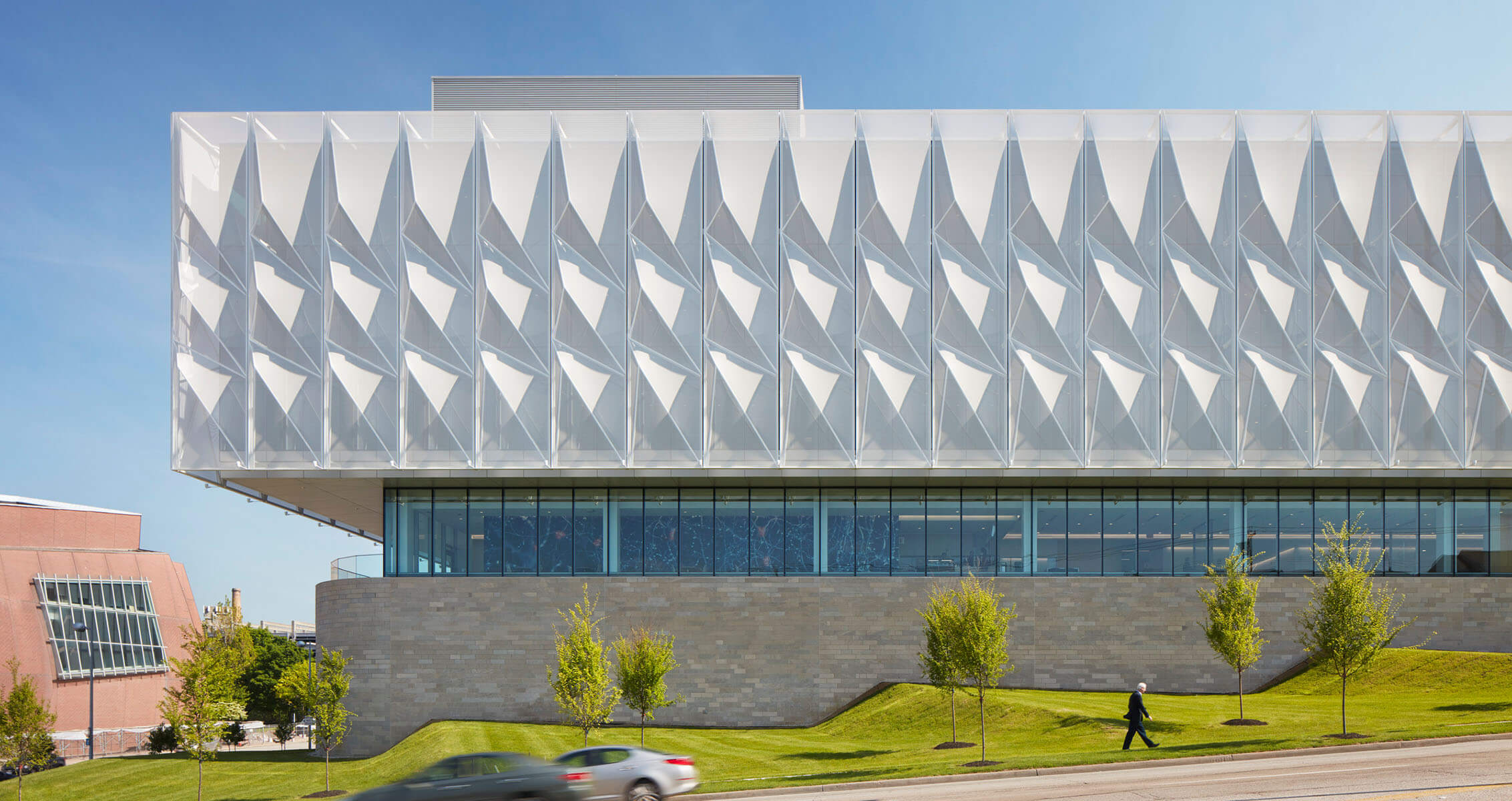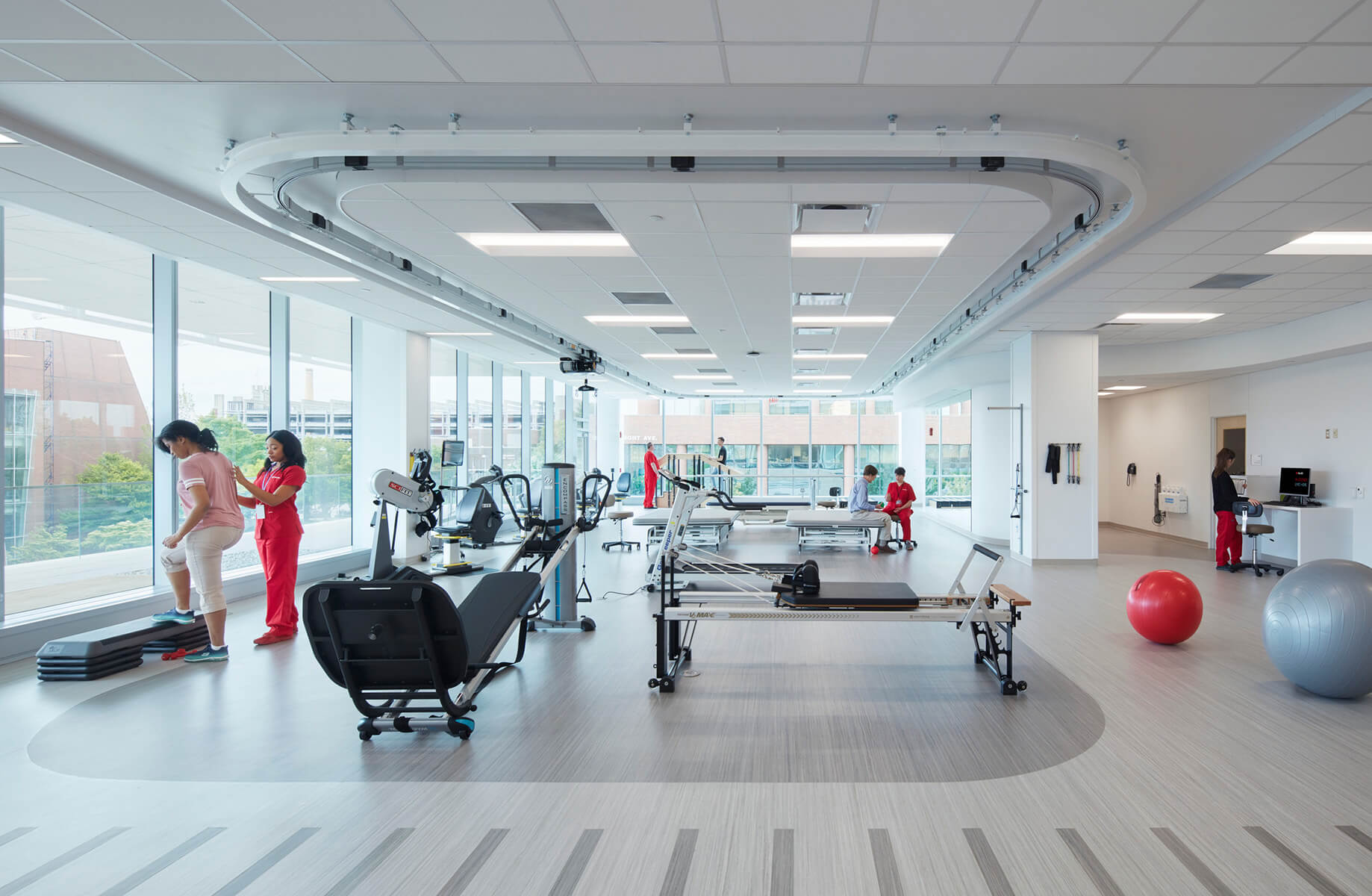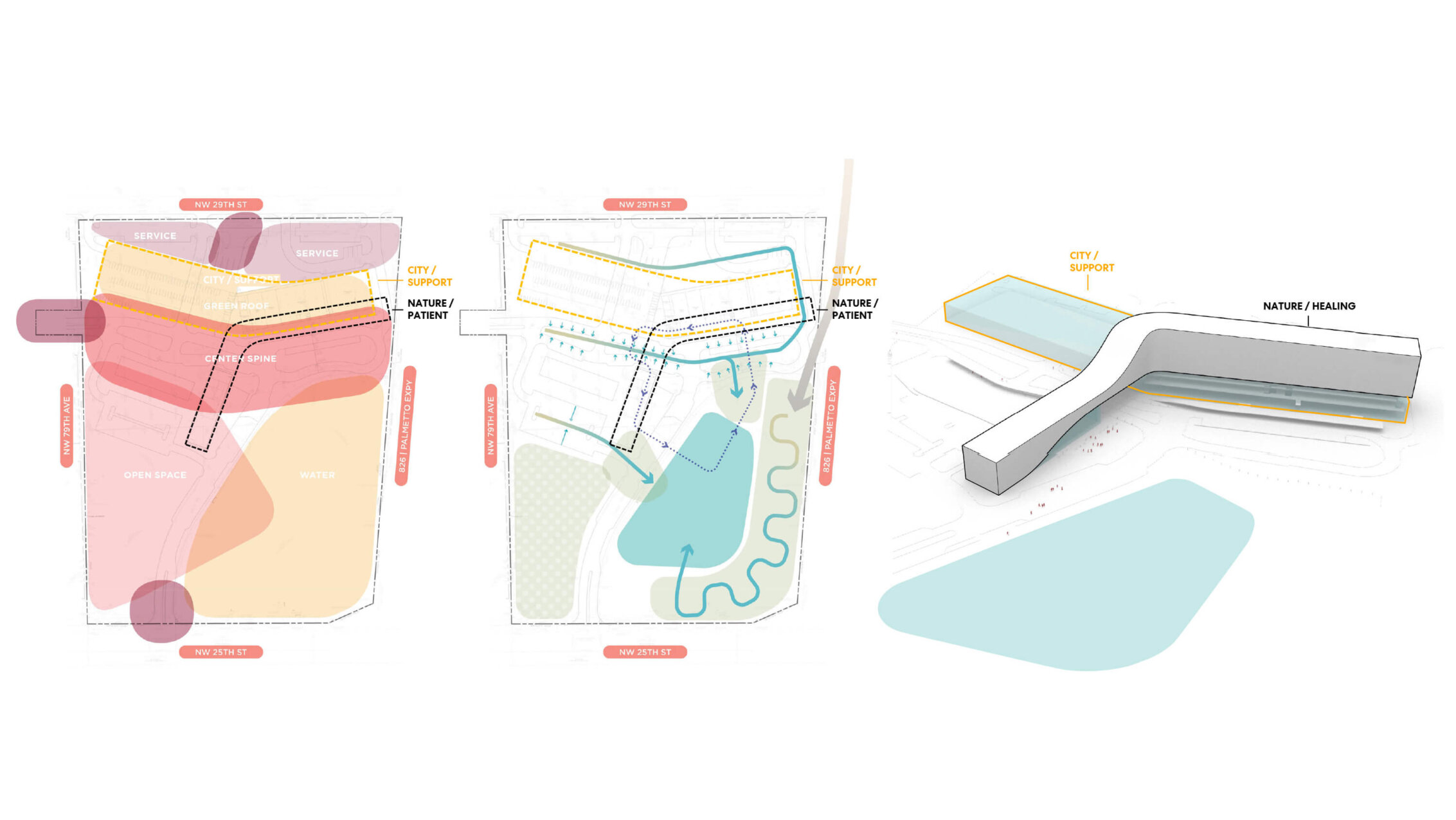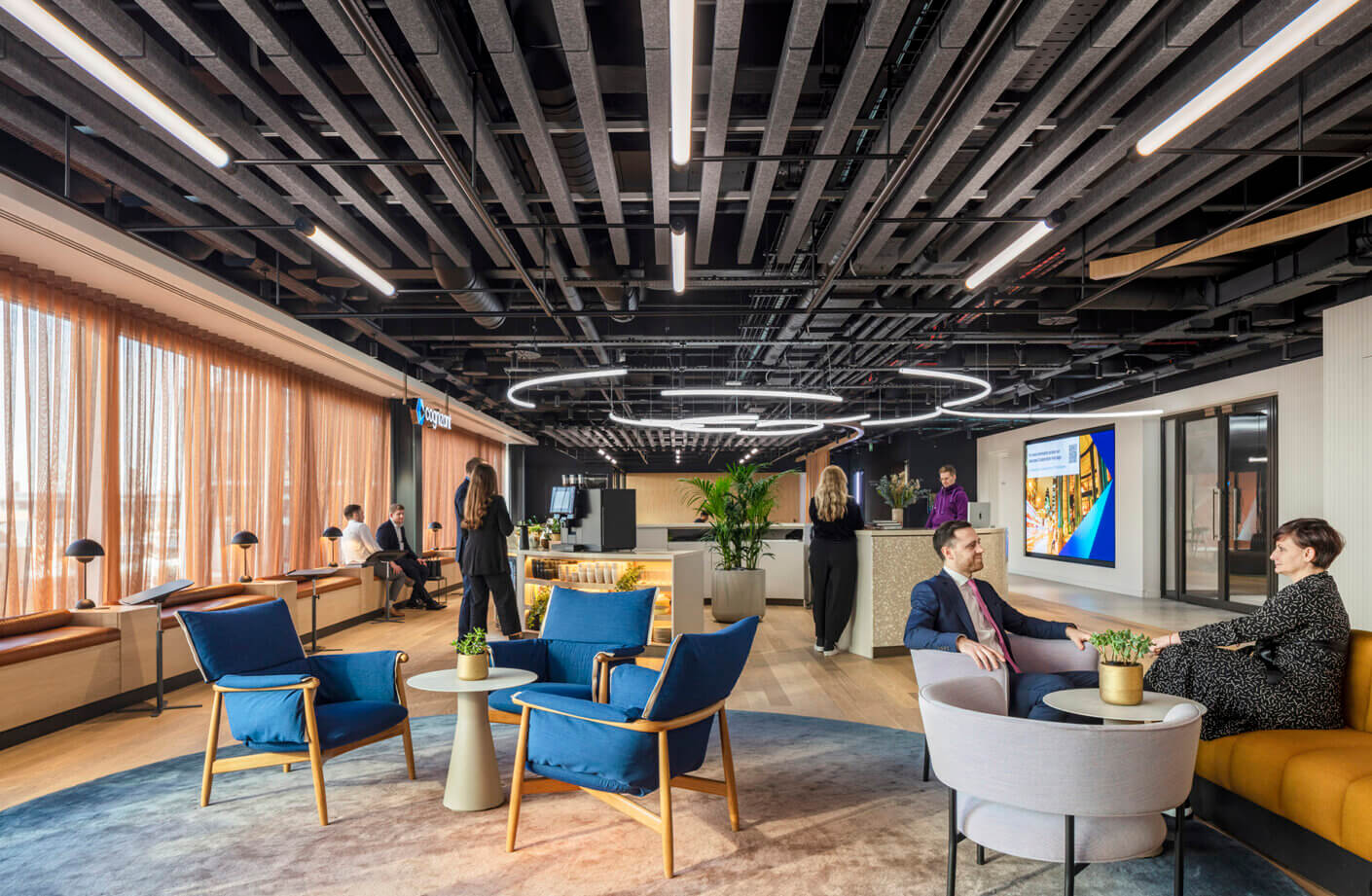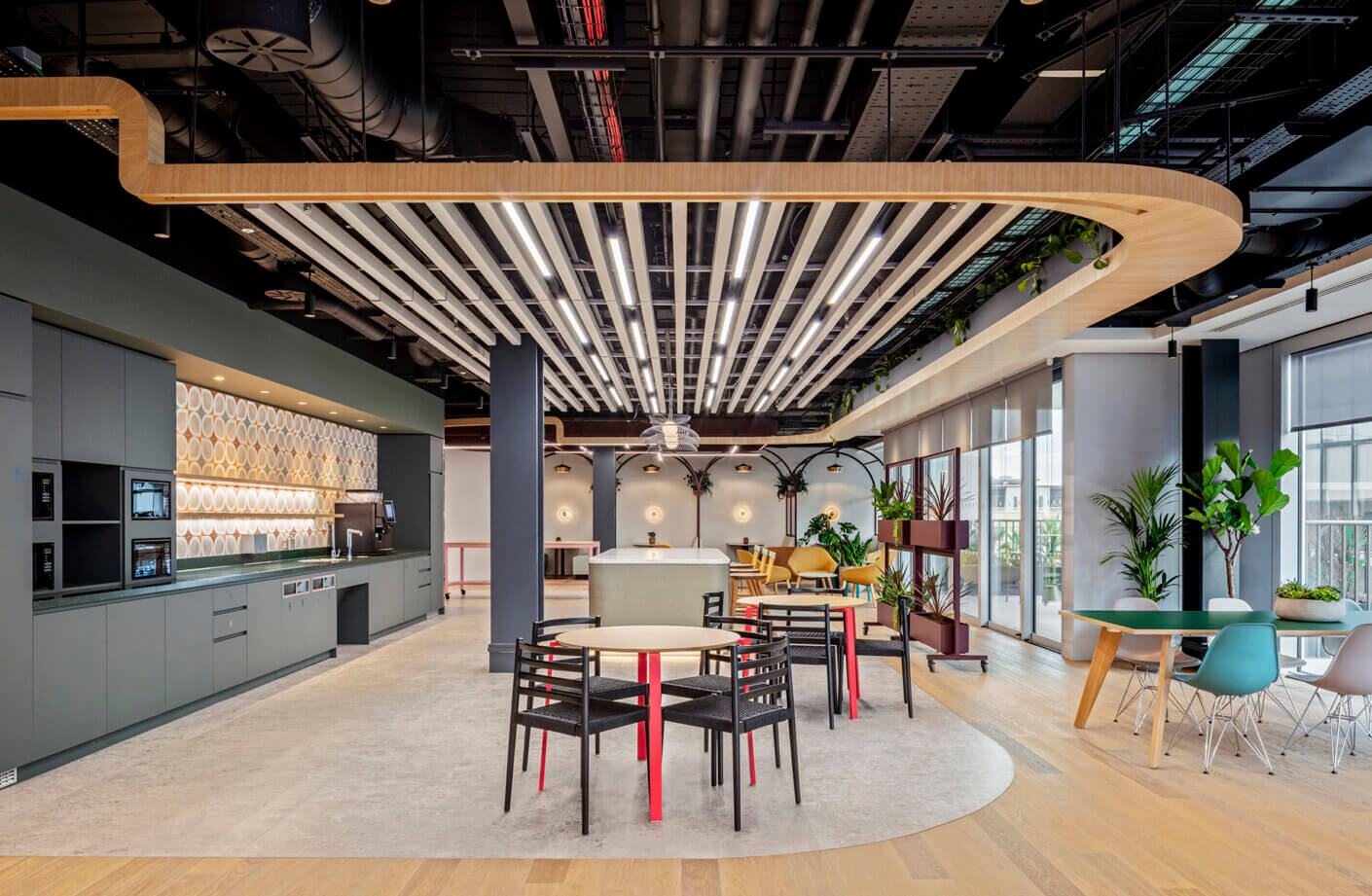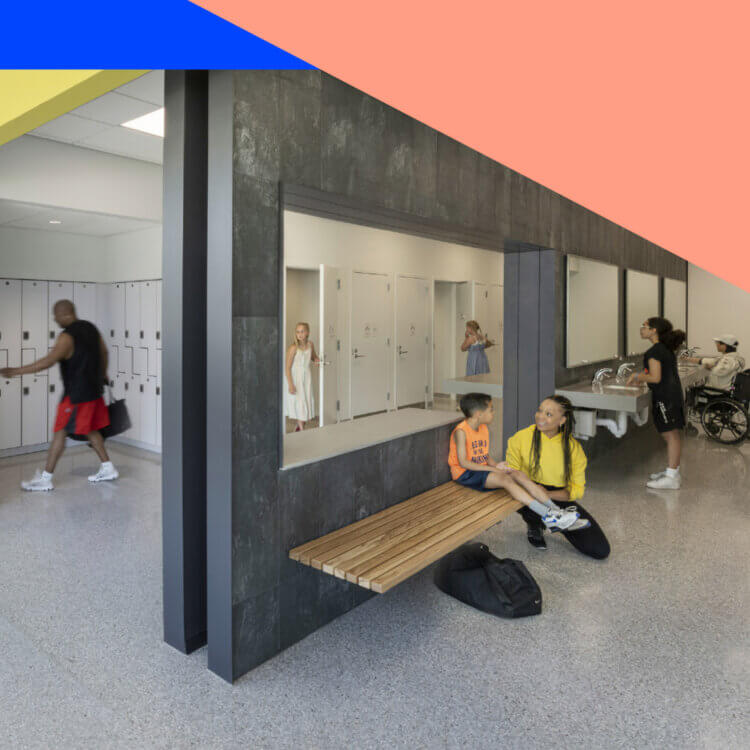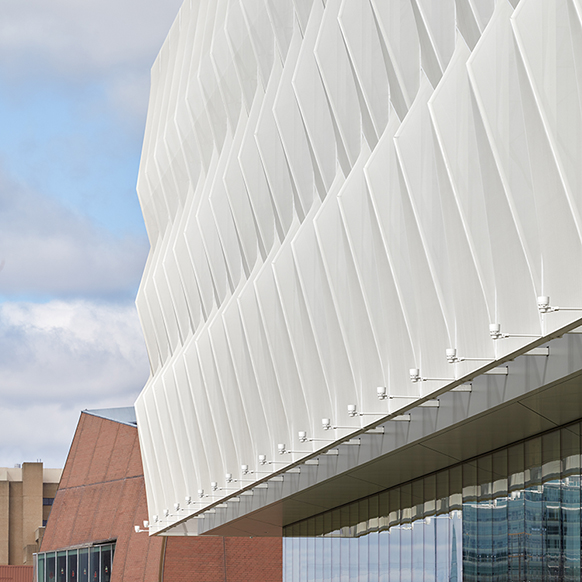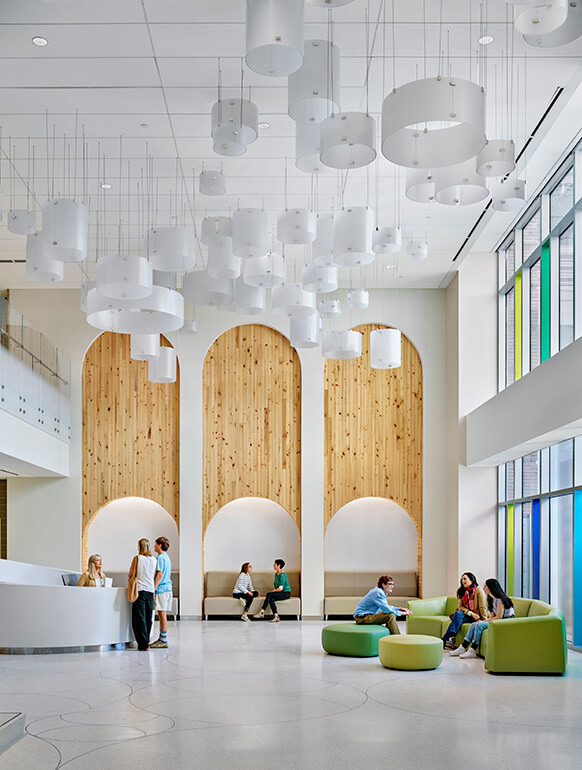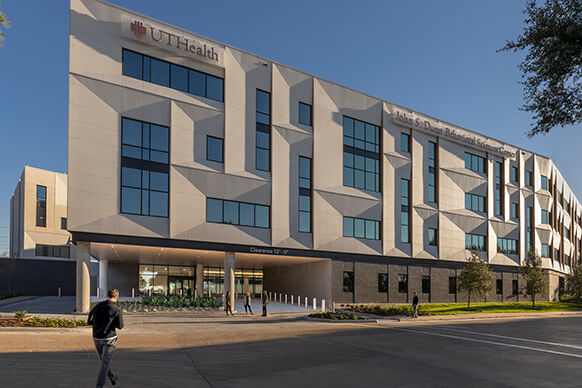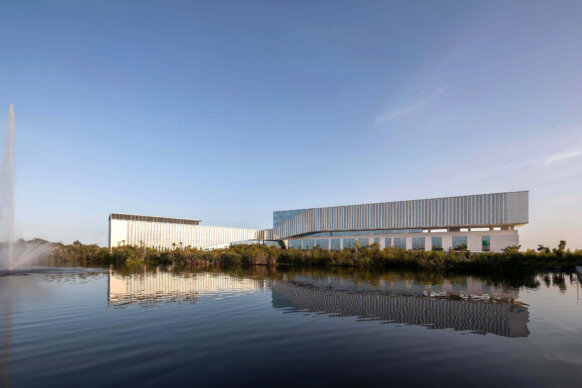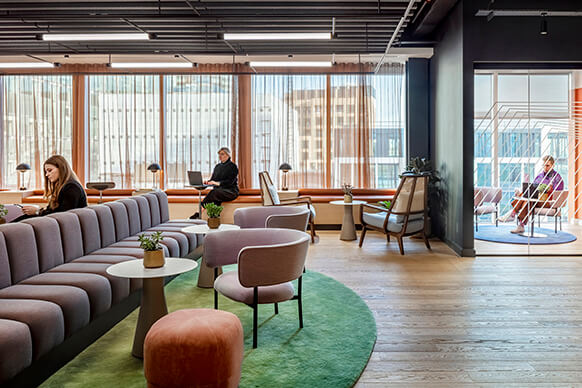Transformative economic transitions like the bioeconomy, green economy, and digital economy are reshaping entire industries and changing how we live, work, and interact with our environment. And all these changes, at their core, are centered on the concept of “brain capital.” This concept considers the health and skills that underlie our collective capabilities to foster innovation, adaptability, and resilience in a rapidly evolving world. Brain health is a critical factor in ensuring success across all scales, from individuals and families to entire nations.
The built environment plays a pivotal role in advancing brain capital. The spaces we inhabit impact our cognitive function, emotional wellbeing, and mental health. By prioritizing brain-positive design in our buildings and urban planning, we can create environments that drive economic growth, build a resilient economy, and help individuals reach their full potential.
